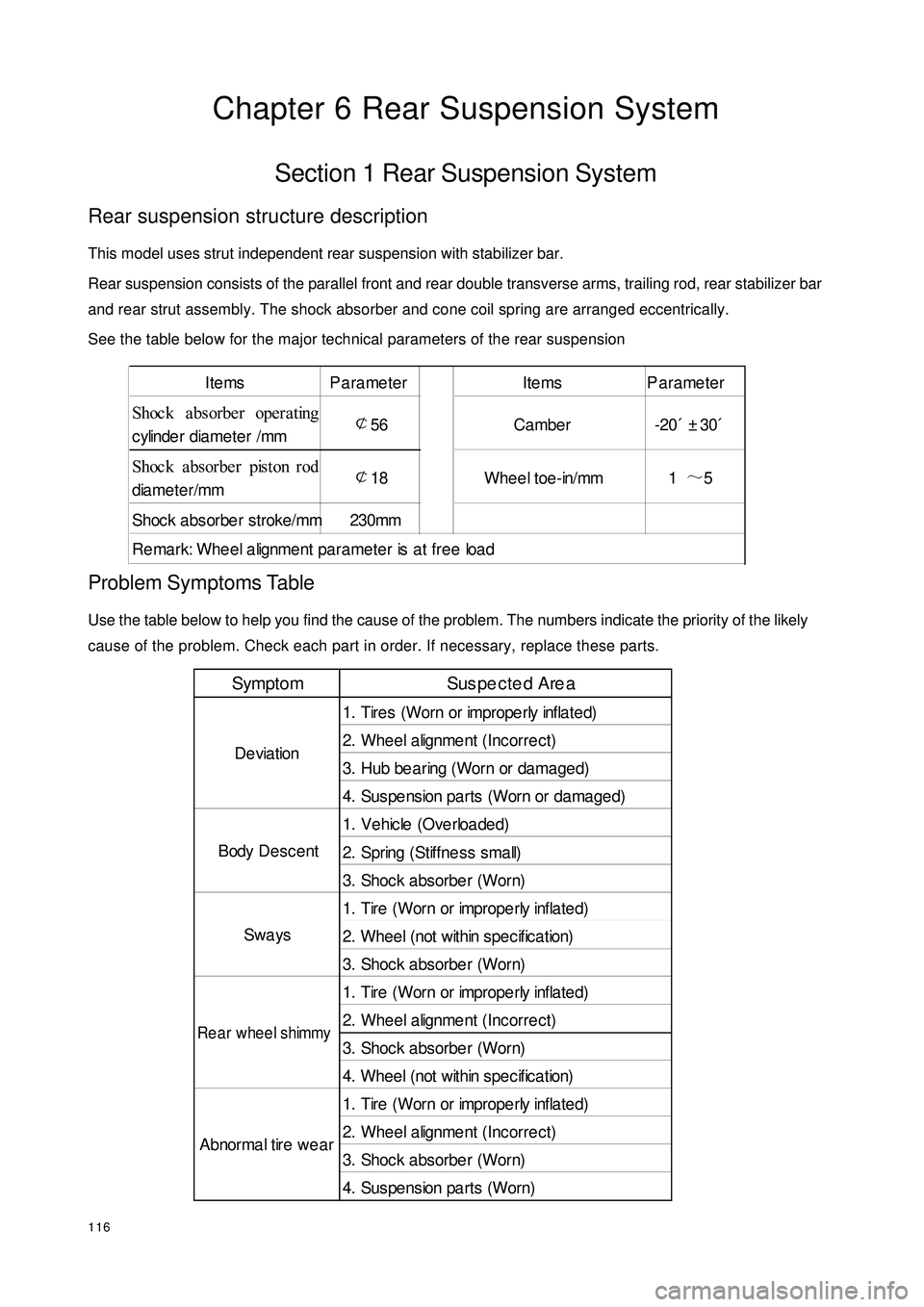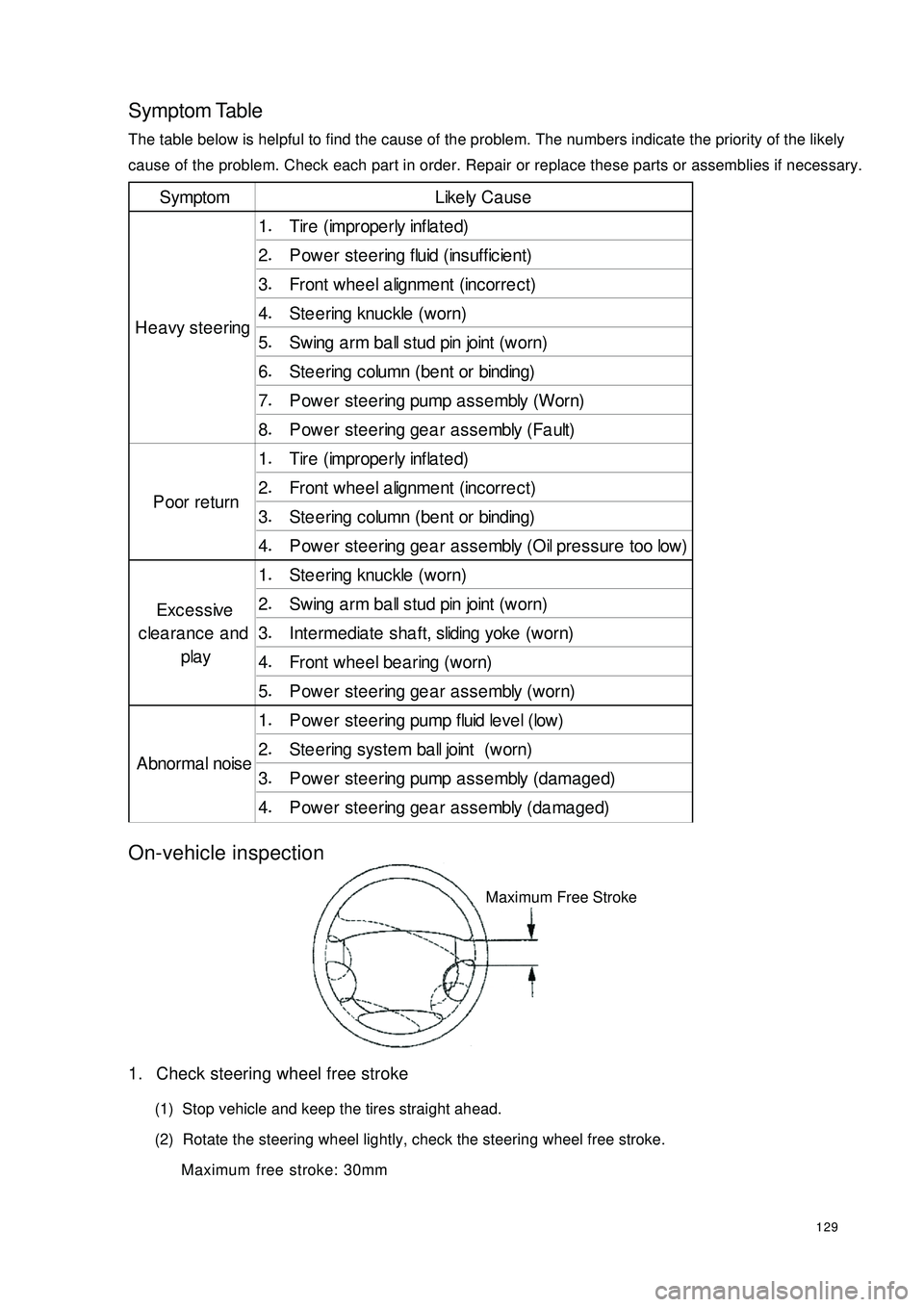tires GEELY CK 2008 Workshop Manual
[x] Cancel search | Manufacturer: GEELY, Model Year: 2008, Model line: CK, Model: GEELY CK 2008Pages: 392, PDF Size: 38.86 MB
Page 34 of 392

2731. Install timing belt cover
Torque: 9.3N. m
32. Install generator assembly
33. Install right engine mounting bracket. See (Figure 67)
34. Install cylinder head cover sub-assembly
(a) Install 2 ventilation PCV hoses to the cylinder head cover.
(b) Connect the generator wire.
(c) Install the wire clip.
(d) Connect A/C compressor switch connector.
35. Install water pump pulley
36. Install power steering pump V-belt
37. Install A/C compressor to crankshaft pulleyV-belt
38. Install generator V-belt
39. Install left & right rear mounting bracket of engine.
40. Install ignition coil and high voltage cable
41. Hoist the engine back into the compartment
42. Install propeller shaft
43. Install air filter assembly with hose
44. Install oil pipe and water hoses
45. Install left and right front tires.
46. Check engine oil for leakage
47. Install all the wire harnesses and the cables on the engine connected to car bodyFigure 67
Page 111 of 392

104PROBLEM SYMPTOMS TABLEUse the table below to help you find the cause of the problem. The numbers indicate the priority of the likely
cause of the problem. Check each part in order. If necessary, replace parts.Sympto m Sus pe cte d Are a
1. Tires (Worn or imprope rly infla te d)
2. Wheel alignment (Incorrect)
3. Steering system joint(Loose or worn)
4. Hub be a ring (Worn)
5. Ste e ring ge a r (Out of adjustme nt or worn)
6. Suspe nsion pa rts (Worn or da ma ge d)
1. Ve hic le (Ove rloa de d)
2. Spring (stiffne ss not comply with or da ma ge )
3. Shoc k a bsorbe r (Worn)
1. Tire (Worn or imprope rly infla te d)
2. Stee ring linka ge (Loose or dama ged)
3. Sta bilize r ba r (Be nt or broke n)
4. Shoc k a bsorbe r (Worn or da mage d)
1. Tire (Worn or imprope rly infla te d)
2. T ir e ( D yna mic ba la nc e is not a s s pe c if ie d)
3. Shock a bsorber (Worn or da ma ge d)
4. Wheel alignment (Incorrect)
5. Ball stud pin (Worn or da mage d)
6. Hub be aring (Worn or da mage d)
7. Ste ering linka ge (Loose or worn)
8. Ste e ring ge a r (Out of adjustme nt or worn)
1. Tire (Worn or imprope rly infla ted)
2. Wheel alignment (Incorrect)
3. Shoc k a bsorbe r (Worn or da mage d)
4. Suspe nsion pa rts (Worn or da ma ge d) Abnormal tire wearDeviation
Body Desc ent
Sways
F r ont w he e l s himmy
Page 123 of 392

116Chapter 6 Rear Suspension SystemSection 1 Rear Suspension SystemRear suspension structure descriptionThis model uses strut independent rear suspension with stabilizer bar.
Rear suspension consists of the parallel front and rear double transverse arms, trailing rod, rear stabilizer bar
and rear strut assembly. The shock absorber and cone coil spring are arranged eccentrically.
See the table below for the major technical parameters of the rear suspensionProblem Symptoms TableUse the table below to help you find the cause of the problem. The numbers indicate the priority of the likely
cause of the problem. Check each part in order. If necessary, replace these parts.Items Parameter Items Parameter
Shoc k a bsorbe r operating
cylinder diameter /mm¢
56 Cambe r -20´±30´
Shoc k a bsorbe r piston rod
diameter/mm¢
18 Wheel toe-in/mm 1~
5
Shoc k absorbe r stroke/mm 230mm
Remark: Wheel alignment parameter is at free loadSympto m Sus pe cte d Are a
1. Tires (Worn or imprope rly infla te d)
2. Wheel alignment (Incorrect)
3. Hub be a ring (Worn or da ma ge d)
4. Suspe nsion pa rts (Worn or da ma ge d)
1. Ve hic le (Ove rloa de d)
2. Spring (Stiffness small)
3. Shoc k a bsorbe r (Worn)
1. Tire (Worn or imprope rly inflate d)
2. W he e l ( not w it hin s pe c if ic a t ion)
3. Shoc k a bsorbe r (Worn)
1. Tire (Worn or imprope rly inflate d)
2. Wheel alignment (Incorrect)
3. Shoc k a bsorbe r (Worn)
4. W he e l ( not w it hin s pe c if ic a t ion)
1. Tire (Worn or imprope rly inflate d)
2. Wheel alignment (Incorrect)
3. Shoc k a bsorbe r (Worn)
4. Sus pe nsion pa rts (Worn) Abnormal tire wearDeviation
Body Desc ent
SwaysRear wheel shimmy
Page 133 of 392

126Chapter 7 WheelSection 1 Tire InspectionInspection1. Check the tires for appearance and proper inflation pressure.
Check for inflation pressure after the vehicle stops for over 15min.
2. Using a dial gauge, check the runout of tire.
The tire runout should be no more than 3.0mm
Notice
(1) You must use specified tire and special wheel rim provided by the authorized service
center, otherwise it may affect the normal safe running of the vehicle and even result in
accidents!
(2) If the wheel rim is damaged, you must go to the authorized service center for service and
replacement! Never use the wheel rim of any other model!
3. Changing tire position
It is recommended to change the tire for each 10000km driving. See the figure for where to change each
tire
4. Inspect wheel dynamic balance
The imbalance should be no more than 8.0g. Otherwise, there will be extra vibration and noise when
driving.Tire module Tire inflationpressure
(Kpa
)
175/65 R14 82H 220Front
Page 136 of 392

129Symptom TableThe table below is helpful to find the cause of the problem. The numbers indicate the priority of the likely
cause of the problem. Check each part in order. Repair or replace these parts or assemblies if necessary.On-vehicle inspection1. Check steering wheel free stroke
(1) Stop vehicle and keep the tires straight ahead.
(2) Rotate the steering wheel lightly, check the steering wheel free stroke.
Maximum free stroke: 30mmSymptom Like ly Ca us e
1.
Tire (imprope rly infla te d)
2.
P owe r ste ering fluid (insuffic ie nt)
3.
Front whe e l a lignme nt (inc orre c t)
4.
Ste e ring knuckle (worn)
5.
Swing a rm ba ll stud pin joint (worn)
6.
St e e r ing c olumn ( be nt or binding)
7.
P owe r ste ering pump a ssembly (Worn)
8.
Power steering gear assembly (Fault)
1.
Tire (imprope rly infla te d)
2.
Front whe e l a lignme nt (inc orre c t)
3.
St e e r ing c olumn ( be nt or binding)
4.
Power steering gear assembly (Oil pressure too low)
1.
Ste e ring knuckle (worn)
2.
Swing a rm ba ll stud pin joint (worn)
3.
Inte rmediate sha ft, sliding yoke (worn)
4.
Front whe e l be a ring (w orn)
5.
P owe r ste ering ge a r asse mbly (worn)
1.
P owe r ste ering pump fluid leve l (low)
2.
St e e r ing s ys t e m ba ll joint ( w or n)
3.
Power steering pump assembly (damaged)
4.
Power steering gear assembly (damaged) He avy ste eringPoor returnExcessive
clearance and
play
A bnor ma l nois eMaximum Free Stroke
Page 278 of 392

2717Put three old tires without hubs onto the tire used to fix the driver airbag assembly (see the figure below).
8Try to disconnect at a location far away from the vehicle the connector of the wire harness for deployment
of the driver airbag assembly, connect with the two terminals of the battery removed from the vehicle
and deploy the airbag (see the figure below).
9the deployed driver airbag assembly shall be scrapped according to the scrapping procedures.Wire Harness for DeploymentOld Wheels
without HubWire Harness
for DeploymentNOTICE
Make sure to deploy the driver airbag assembly when there is no person close by.After the driver airbag is deployed, the gas generator is of high temperature. Keep it for over 30 minutesuntil it gets cool for use